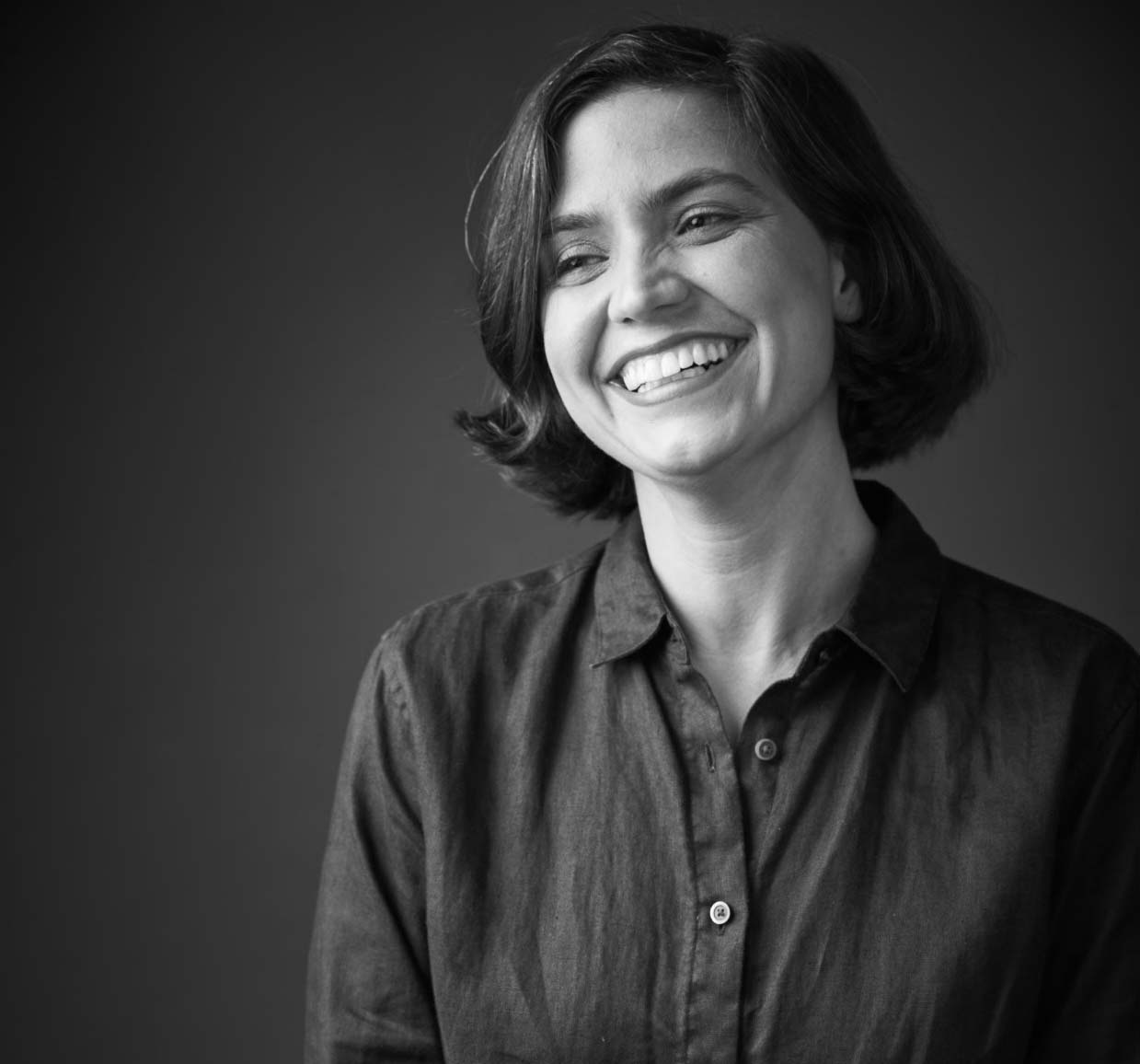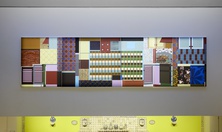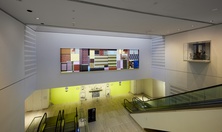Esther Stewart
Wurundjeri Country, Melbourne and Dja Dja Wurrung Country, Daylesford, Victoria
2023
Displayed 2023 at Art Gallery of New South Wales

Esther Stewart
Born 1988 Katherine, Northern Territory.
Lives and works Wurundjeri Country, Melbourne and Dja Dja Wurrung Country, Daylesford, Victoria
Esther Stewart creates paintings, textiles, and installations that examine the possibilities offered by the visual language of architecture, design, and geometry. Working at the nexus of art and design, Stewart explores ways to reimagine, collapse, and expand spaces, while examining their historical influences and respective socio-political implications. Stewart’s hard-edge geometric abstractions invoke a complex genealogy of historical references, including Islamic mosaic, Russian suprematism, constructivism, and neo-geometric conceptualism, which are fused with motifs and found objects from real public and domestic spaces.
Artist text
by Johanna Bear
For The National 4, Esther Stewart presents Second Edition (2023), a new painting on aluminium that showcases her signature geometric graphics, vibrant colours, and illusory twists of scale and depth. Stewart’s intricate compositions depict domestic interiors personal to the artist, to interrogate how we relate to space and architecture. They might invoke Vivienne Binns’ images of domestic patterns or Lesley Dumbrell’s optical colour-field works, and yet develop an innovative language of abstraction unique from these pioneering Australian artists to represent the real.
The starting point for this painting is a vintage 1970s kitchen acquired via Facebook Marketplace. It is distinctive of the era, with canary-yellow cabinetry, floral-patterned flooring, and mottled sierra tiles, and held sentimental value to the original owners. Stewart reimagines this relic in a contemporary context both literally – through her restoration of the kitchen – and figuratively in Second Edition, which renders the kitchen’s form, palette, layout, and design minutiae as a field of pattern and colour. The resulting work pulses with the vitality of the kitchen itself.
Stewart’s paintings, textiles, and installations draw from 1960s and 1970s interiors and DIY magazines, referencing the aesthetics and multifunctional designs of this era. ‘One of the things I love about those magazines is that the objects often have a utopian quality to them, and so do the projects,’ she says. (1) ‘They are optimistic. There is this capacity for the object to have multiple different functions. I think that is what I’m trying to do in the paintings.’ (2)
Inspired by the unusual photographic perspectives in these magazines, which often include images of one-to-one models rather than real homes, Stewart captures the kitchen in its totality through playful manipulation of scale and perspective. ‘It twists your imagination,’ she says. ‘It’s a process of showing the kitchen from above, below, from its side, and collaging together those different ways of looking at something, but heavily abstracted.’ (3) The spatialisation within the painting is emphasised by its placement on a bulkhead above the Art Gallery of New South Wales’ escalators, making it viewable from various angles as visitors descend from the foyer into the lower galleries.
This extends into the modular structure of the work. Its twelve interlocking panels become building blocks to create different compositions. Each can exist as a discrete, self-contained image, or be rotated and reconfigured – whether into three paintings or a single eight-metre-long work. This flexibility requires thorough planning that Stewart compares to a ‘building project’ or ‘design challenge.’ (4) Each painting is mapped out in computer programs before up to 50 iterations are tested and tweaked – a process aided by the artist’s architectural knowledge.
Stewart nods to the modular furniture, adaptable building units, and thrifty home improvements of bygone eras, when spaces and objects were personalised with a focus on longevity. This thoughtful salvaging, adapting, and repurposing is far from today’s mass-produced homes and generic, quick-fix refurbishments. It also resists universal standards imposed upon the use and occupation of domestic spaces. By accommodating difference, these customisations undermine dominant gendered, heteronormative, ableist, and Eurocentric ideals that dictate how spaces are designed, often with a focus on the nuclear family.
Ultimately, Stewart’s works inspire a reimagining of space through experimentation and play. As the artist says, ‘I’m interested in making works that are visually complex, but also pleasing and joyous. (5)
(1) Interview between the artist and author, 30 September 2022.
(2) ibid.
(3) ibid.
(4) ibid.
(5) ibid.
Artist's acknowledgements
This project has been supported by the Art Gallery of NSW Women’s Art Group.
Esther Stewart is represented by Sarah Cottier Gallery, Sydney and STATION, Melbourne.



